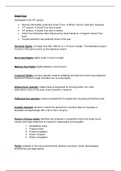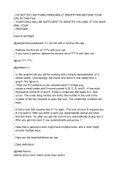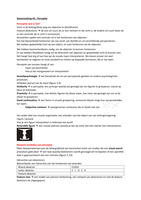Summary
Progress Test Summary
- Course
- Institution
This summary contains a lot of information for the Progress Test. Over the years I collected this and now I’m graduated I put everything together for those who still need to pass this test. It contains lots of terms, but also some example questions can be found in this document. Hope it helps you...
[Show more]







